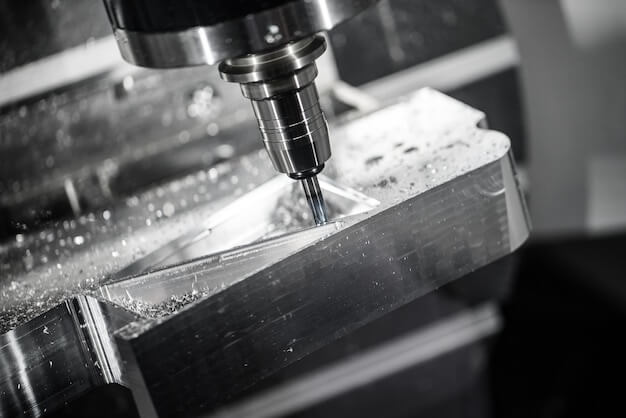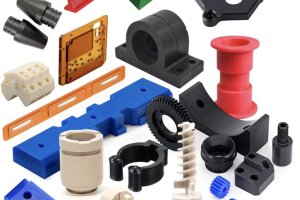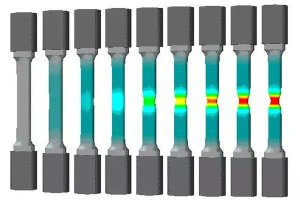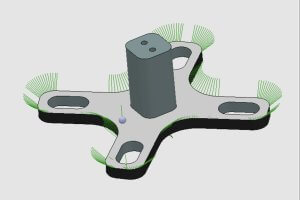In the exciting world of CNC machining, knowing the various methods for processing part surfaces is essential. Each technique has its unique perks and is perfect for different scenarios. Let’s dive into some conventional methods of machining part surfaces, focusing on rotational and planar surfaces, with a touch of fun and practicality.
Machining Rotational Surfaces
Turning Outer Cylindrical Surfaces
Turning is one of the most popular machining processes. It involves spinning the workpiece while a cutting tool moves in a straight line to shape the material. This method is fantastic for creating cylindrical parts and can achieve excellent accuracy and surface finish.
Drilling, Reaming, Boring, and Honing Holes
Hole machining is a crucial step in CNC machining, and there are several cool methods to do it:
- Drilling: Using a twist drill to create holes, usually less than 80mm in diameter. You can drill on lathes, drilling machines, or boring machines. Drilling is straightforward but comes with challenges like poor rigidity, guidance, chip removal, and high cutting temperatures.
- Reaming: Reaming uses a reamer to enlarge existing holes, improving dimensional accuracy and surface finish. It’s typically a semi-finishing process for holes, perfect for enhancing drilled, cast, or forged holes.
- Boring: Boring uses a single-point cutting tool to further process holes that have been forged, drilled, or cast. Boring machines are the primary equipment for this process, capable of machining large holes and ensuring the shape, size, and positional accuracy of the holes.
- Honing: Honing is the final touch for holes, providing high precision and surface quality.
Grinding and Finishing
Grinding is used to achieve a high degree of surface finish and dimensional accuracy. It involves an abrasive wheel removing small amounts of material. For even finer finishes, you can use polishing techniques like honing and lapping.
Challenges in Hole Machining
Machining holes isn’t always a walk in the park:
- Tool Rigidity: Drills and reamers can deflect, especially in deep hole machining.
- Heat and Chip Removal: The confined space within a hole makes it tricky to dissipate heat and remove chips, affecting surface quality and precision.
- Tool Wear: Maintaining the precision of cutting tools is crucial, as tool wear directly impacts hole accuracy.
Ensuring Dimensional Accuracy in Holes
Different methods ensure the dimensional accuracy of holes:
- Drilling: The initial step, often followed by more precise operations.
- Reaming: Used to refine the size and finish of the hole.
- Boring: Ensures alignment and precision, especially for larger or deeper holes.
A Handy Table of Hole Machining Methods and Their Characteristics
| Method | Accuracy (IT) | Surface Roughness (Ra, μm) | Application |
|---|---|---|---|
| Drilling | IT13-IT11 | 50-12.5 | General purpose, initial hole creation |
| Reaming | IT10-IT9 | 6.3-3.2 | Refining hole size and finish |
| Boring | IT8-IT7 | 1.6-0.8 | High precision and alignment |
| Honing | IT7-IT5 | 0.2-0.025 | Final surface finish, high precision |
| Grinding | IT6-IT5 | 0.8-0.2 | High precision, hard materials |
| Lapping | IT5-IT3 | 0.1-0.008 | Ultra-fine surface finish and precision |
Machining Planar Surfaces
Turning, Planing, and Milling
- Turning: Used for machining the end faces of cylindrical parts. It’s perfect for achieving high flatness and parallelism. Dimensional tolerance is generally IT8
IT7, with a surface roughness of Ra 6.31.6. - Planing: Ideal for large, flat surfaces. The workpiece moves back and forth under a stationary cutting tool. Common machines include the shaper and the planer. Planing is adaptable but has lower productivity and precision, with dimensional tolerance of IT9
IT8 and surface roughness Ra 6.31.6. - Milling: One of the most versatile methods for machining flat surfaces. It uses rotary cutters to remove material from a workpiece moving along multiple axes. Milling can be categorized into end milling and peripheral milling. End milling provides higher quality and productivity, while peripheral milling is more adaptable for various features.
Grinding and Surface Finishing
Grinding is essential for finishing flat surfaces with high precision. For even better finishes, polishing methods like lapping can be applied. These processes are critical for applications requiring extremely smooth and flat surfaces, such as gauge blocks and optical components.
Grinding
Used for precision finishing of flat surfaces, grinding machines include horizontal and vertical surface grinders. Grinding methods include surface grinding and cylindrical grinding. Surface grinding is preferred for small, high-precision parts, while cylindrical grinding is suitable for larger, less precise parts.
Lapping and Scraping
- Lapping: Lapping is a surface finishing method usually performed after grinding. It provides high accuracy and surface quality, with tolerances up to IT5
IT3 and surface roughness Ra 0.10.008 μm. - Scraping: Scraping is a manual process using a scraper to remove thin layers of metal from the workpiece surface. It is often used after precision planing and milling to achieve high-quality surfaces with Ra 0.8~0.2 μm.
Machining Complex Surfaces
Complex surface machining includes forming surfaces, thread machining, and gear machining.
Forming Surface Machining
Forming surface machining uses forming tools or specific relative motions between the tool and the workpiece. Common methods include forming tools and template methods, suitable for a wide range of sizes.
Thread Machining
Thread machining includes tapping, threading, milling, grinding, and rolling. The precision and surface quality of threads directly affect their performance in connections and transmissions.
Gear Machining
Gear machining primarily involves hobbing, shaping, and gear finishing. The selection of gear machining methods depends on the required precision, which is categorized into 12 levels. Common gear machining methods include shaving, honing, and grinding.
Selecting the Right Machining Process
Choosing the right machining process depends on various factors, including the material, size, and required precision of the part. Here are some practical tips:
- For Large Flat Surfaces: Planing and milling are excellent choices. Planing is great for very large parts, while milling offers versatility and precision for medium to large parts.
- For High Precision: Grinding and honing are ideal for achieving tight tolerances and smooth finishes.
- For High Volume Production: Methods like broaching (for holes) and high-speed milling can significantly boost productivity.
By understanding these conventional machining methods and their specific applications, you can make informed decisions that enhance the efficiency and quality of your CNC machining projects. Remember, the right method can make all the difference in achieving the desired precision and surface finish for your parts.
Other Articles You Might Enjoy
- Material Versatility in CNC Machining: From Titanium to Thermoplastics
Introduction to CNC Machining CNC machining stands as a cornerstone in the manufacturing sector, enabling the precise creation of parts and components. This process utilizes computer numerical control (CNC) to…
- Surface Refinement: Leveraging Bead Blasting for CNC Machining
In the realm of CNC machining, surface quality plays a pivotal role in determining the overall performance and aesthetics of the final product. Leveraging bead blasting as a surface refinement…
- Exploring the World of CNC Machining(what is cnc Valentina)
What is CNC? This acronym stands for Computer Numerical Control, a technology that has significantly revolutionized various sectors including manufacturing, engineering, and design. CNC machining is automated control over specialized…
- Tapping Methods in CNC Machining
Classification and Characteristics of Tapping in CNC Machining Tapping, using taps to machine threaded holes, is the most commonly used method for creating threaded holes. It is mainly suitable for…
- Innovative CNC Machining for Advanced Wearable Technology
Innovative CNC Machining for Advanced Wearable Technology The advent of Computer Numerical Control (CNC) machining and wearable technology has transformed various industries, including healthcare, fitness, fashion, and defense. CNC machining…
- CNC Machining for the Renewable Energy Sector: Material Choices for Durability and Efficiency
Introduction to CNC Machining in the Renewable Energy Sector CNC (Computer Numerical Control) machining stands as a pivotal manufacturing process in the renewable energy sector, enabling the precise production of…









